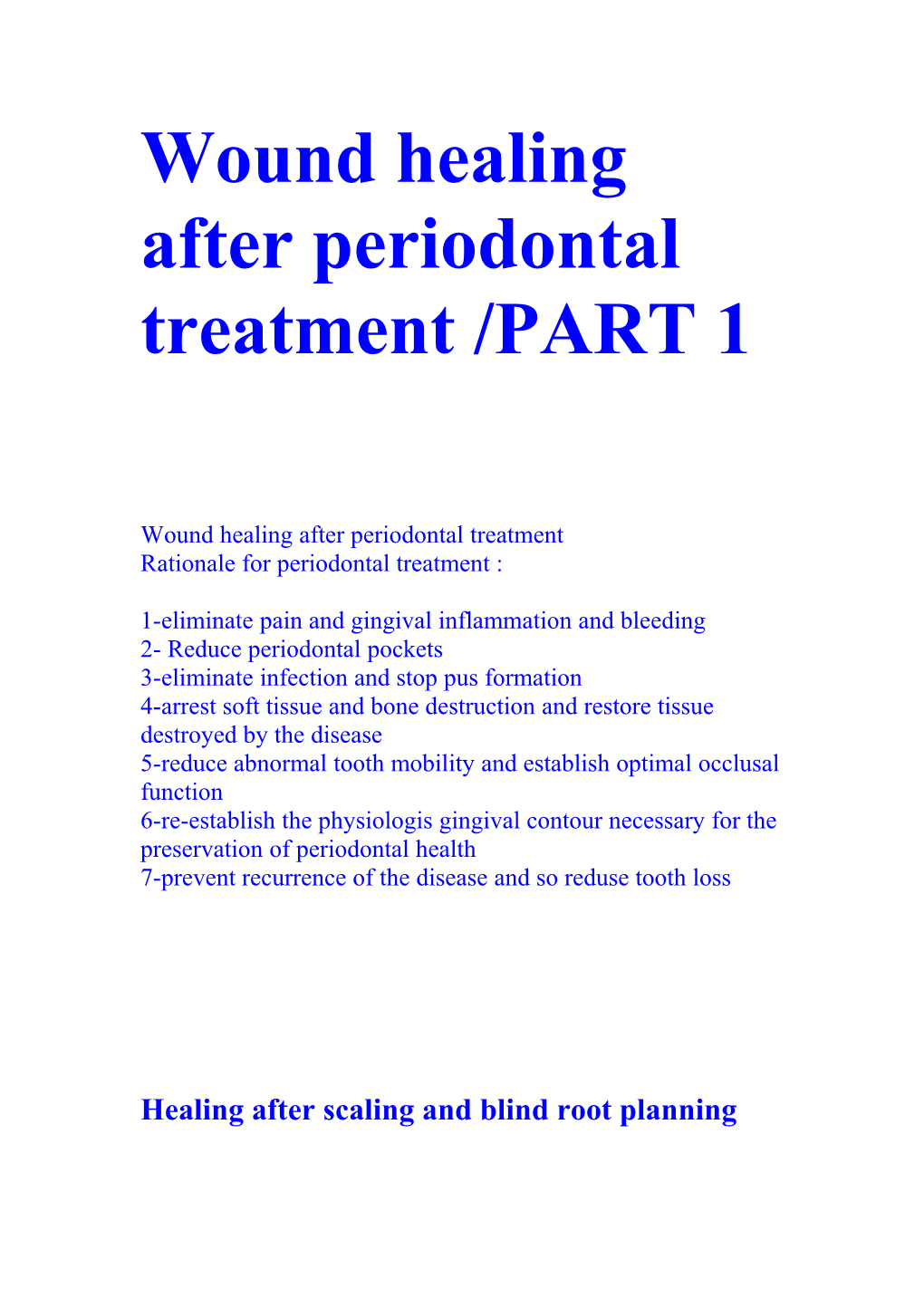Wound healing after periodontal treatment/PART 1
Wound healing after periodontal treatment
Rationale for periodontal treatment :
1-eliminate pain and gingival inflammation and bleeding
2- Reduce periodontal pockets
3-eliminate infection and stop pus formation
4-arrest soft tissue and bone destruction and restore tissue destroyed by the disease
5-reduce abnormal tooth mobility and establish optimal occlusal function
6-re-establish the physiologis gingival contour necessary for the preservation of periodontal health
7-prevent recurrence of the disease and so reduse tooth loss
Healing after scaling and blind root planning
If scaling is done with overlapping strokes – it is technically possible to detach all the subgingival deposits Immediately after conclusion of a successful subgingival scaling all the plaque organisms are detached from the tooth –many of the bacteria are swimming in theexudates . however,the bleeding which follows will carry most of the detached particles ,including the bacteria out of the pocket during and immediately after the debridement .the bleeding will stop in a few minutes ,but a fairly profuse exudation from damaged blood vessels will continue for many hours. The exudates which is a mixture of water, serum protein & white blood cell will accumulate between the tooth & soft tissues . this is called gingival fluid . The gingival fluid contributes further to the mechanical cleansing of the pocket because it seeps out in a continuous flow.
Most of the detached plaque organisms are brought out of the pocket with the gingival fluid in a few minutes. those organisms which may have been captured by in the soft tissues are being eradicated by the pmnl.
Finally , large numbers of bacteria enter the lymph and blood vessels to be brought to the regional lymph nodes or the spleen where they are destroyed.
Only a few hours after debridement, all the bacteria are removed (mostly with gingival fluid). The secretion of gingival fluid will then subside and the epithelial reminant which may have been left in the pocket begin to proliferate.
The granulation tissue in the lateral wall of the pocket , in an environment free of plaque &calculus , will be changed into a connective tissue , thereby minimizing shrinkage ,this is regarded as an important advantage of blind root planning over radical surgery i.e less trauma &hemorrhage will result in less gingival shrinkage during healing , this is very important for esthetic which is a major consideration of therapy , particulary in the anterior region .
Further more exposed cementum to a pathological pocket is cytotoxic to both epithelium &fibroblastby bacteria with their toxins penetrating this cementum.
Removel of the exposed cementum eliminates undesirable surface contamination &provides a healthy surface to which fibroblasts adhere.thus reduction of pocket probing depth following blind root planing is partly due to shrinkage of gingival walls of pockets (repair) forming long junctional epithelium in most cases & partly from regeneration of lost attachment.
